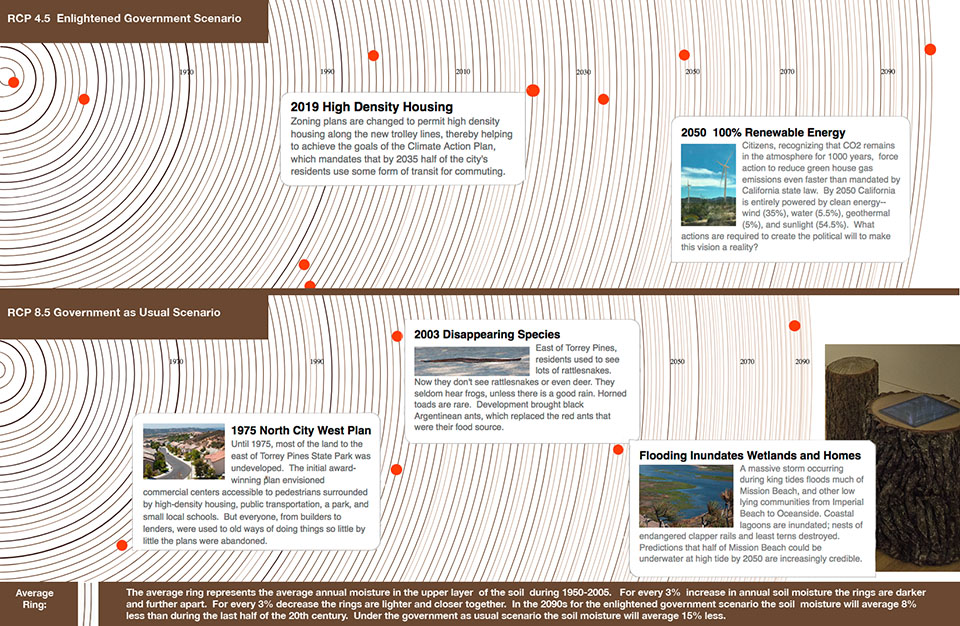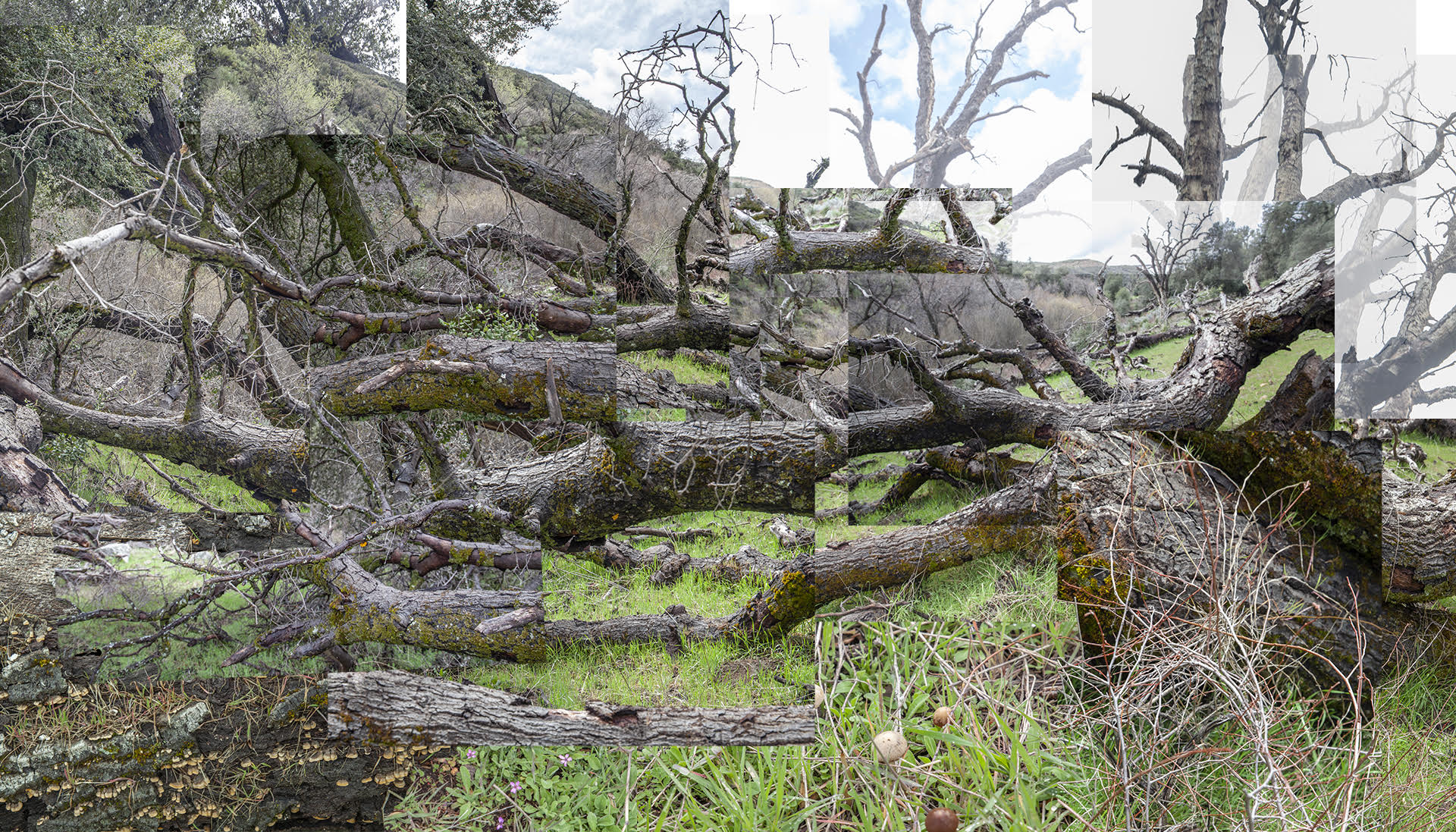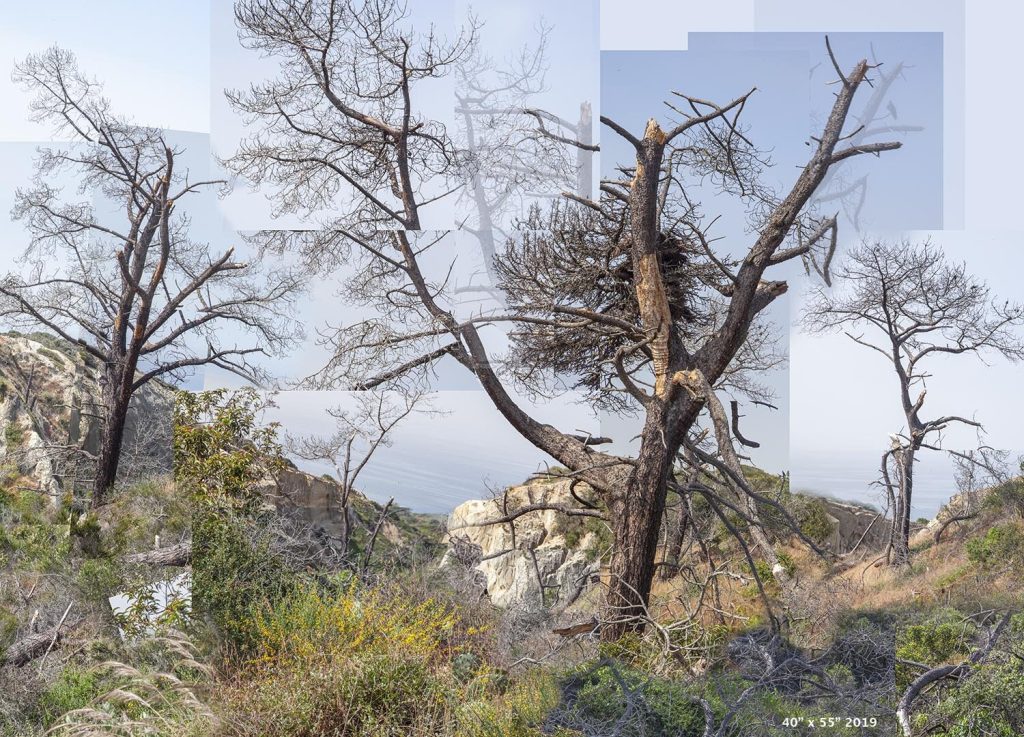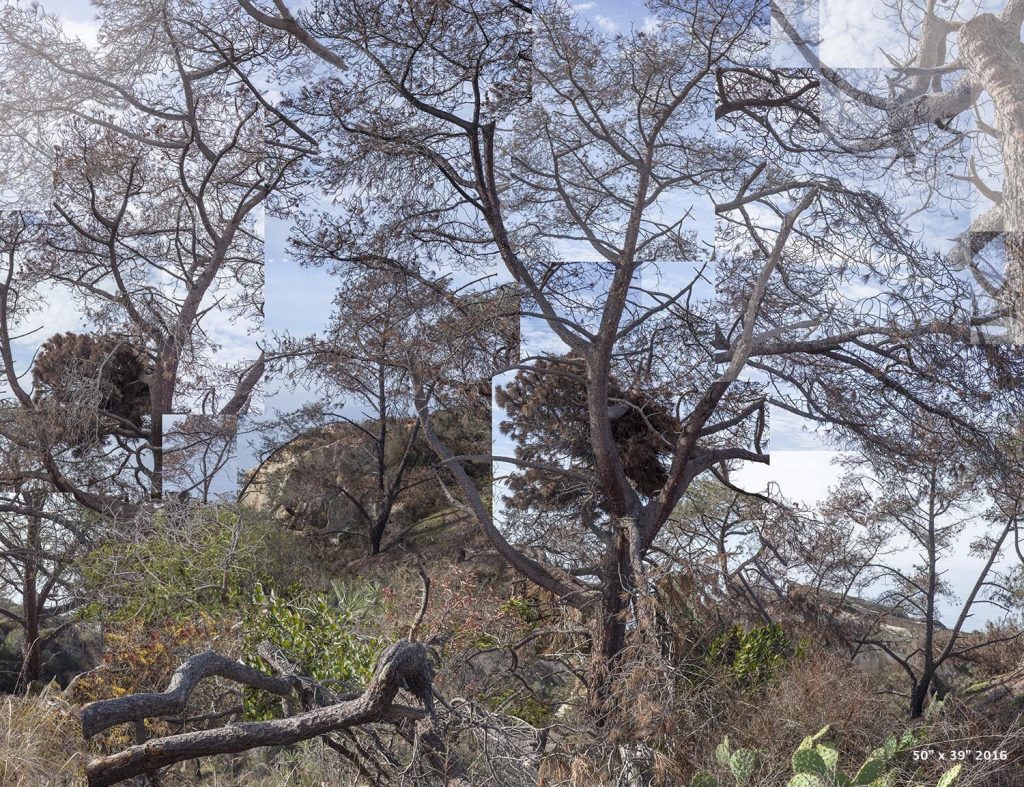Ruth Wallen is a multi-media artist and writer. Her work is dedicated to encouraging dialogue around ecological and social justice. Scientific observation, artistic creation, ecological theory and cultural activism all come together.
Wallen’s work is part of a complex task: to convey information through art in an environmentally friendly way. Such artists are not only aware of environmental problems, they know the problem at its root and have an active relationship with the non-human world.
Most of her work can be found in the United States, especially in the forests of California.
Walking with Trees
“Walking with Trees” is one of her most recent projects. In fact, it is still ongoing. It aims to raise awareness of ecological changes in California’s forests. Her research shows that more than 150 million trees have died in California since 2010. Urbanisation, climate change and new species introduced through global trade are the reasons for this.
The project consists of a series of photomontages depicting trees in the San Diego, California area, and their changes over time. In an article written by the artist in 2019, she describes the experience of walking alongside these trees since 2003.
The magnificence, diversity and delight of the forest cannot be fully expressed in any single image.
Indeed, the form of a photomontage provides a series of glimpses, from a variety of scales and perspectives, to evoke both the vibrancy of life and the fragmentation caused from a myriad of ecological challenges.
Listen to the Trees
This artwork addresses the impact of climate change on San Diego’s ecology. The installation focuses on two trees, the coastal Torrey pine, and the Jeffrey pine growing in the inland mountains. Photomontages line the walls, while tree stumps offer visitors a place to sit and contemplate the scene. On one stump an iPad touch screen displays diagrams of the tree rings of these two species based on historical data and models projecting future climate under differing emissions scenarios.
There is a lot to learn from the forest. It can inspire or restore, not only ways of thinking, but also ways of acting. The interpretive panel next to the huge tree trunk that collapsed in 2011 reminds the reader that life and death are intertwined. As they decompose, the logs provide habitats for many creatures, from fungi, plants and salamanders to small mammals. Mirroring this natural process, the permaculture practice of hugelkultur involves covering fallen logs with twigs, leaves and soil to plant on top of them. Trunks retain and provide moisture and nutrients as they decompose, thereby nourishing the growing plants.
The work has its own website. If you are interested in finding out more, click here.

The intent of promoting
The relationships eco-artists attempt to develop between the ecological art piece, the viewers/participants and collaborators is the most important element of eco-art.
Ecological artists attempt to provide a learning environment, one experienced both through the body and abstractly as a concept.
Driving ecological artists’ practice is the hope of providing a connective spark between people and the art that will assist in the production of an ecological understanding or wisdom: the foundation for a positive, pro-active belief system informing social transformation.
No one knows for sure where ecological change is heading or how fast it will take place. For now, it is clear that trees are dying, trees that harbour enormous knowledge by the mere fact of existing. It is vital for us to learn to live with all the emotions inherent in this knowledge, to support others to do the same, to constantly discuss what we perceive, and to work together.
If you are interested in this topic, you might also like this article on reforestation and photography.







